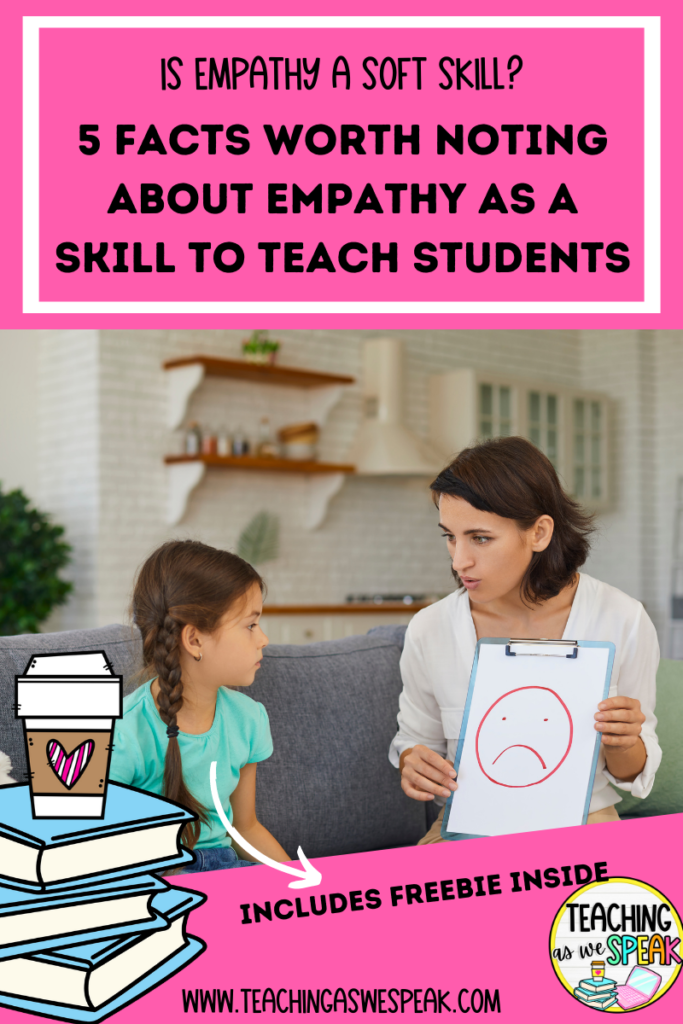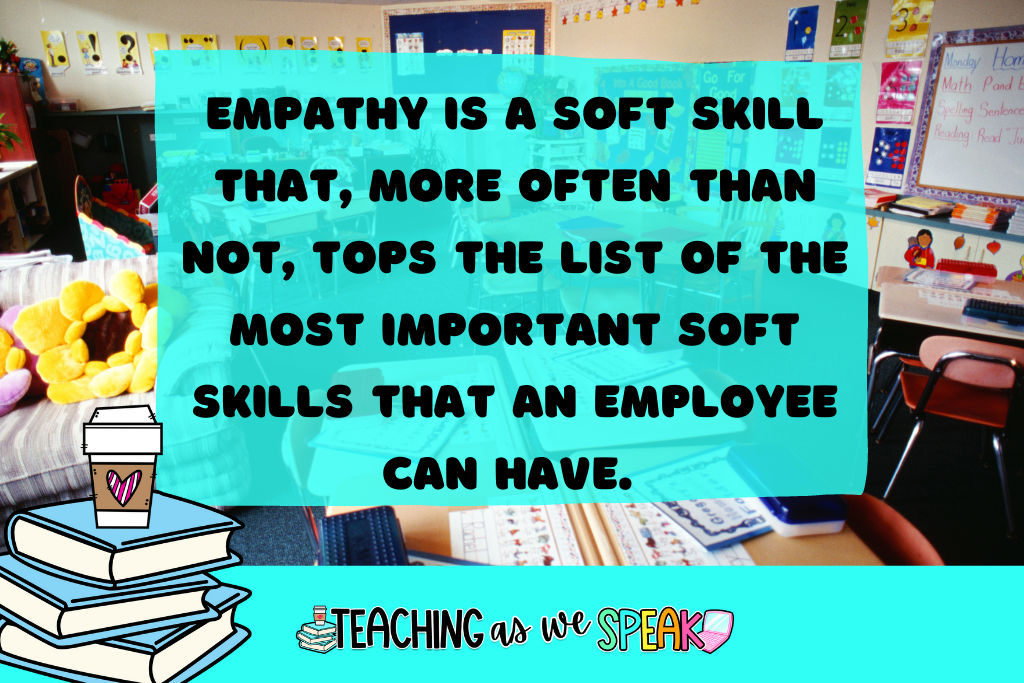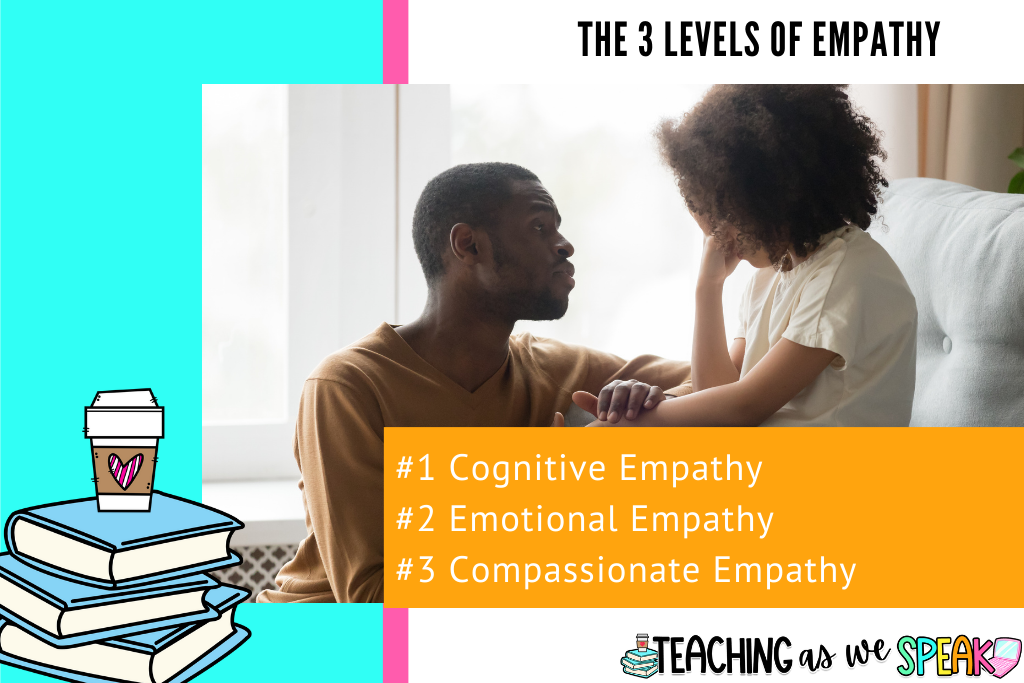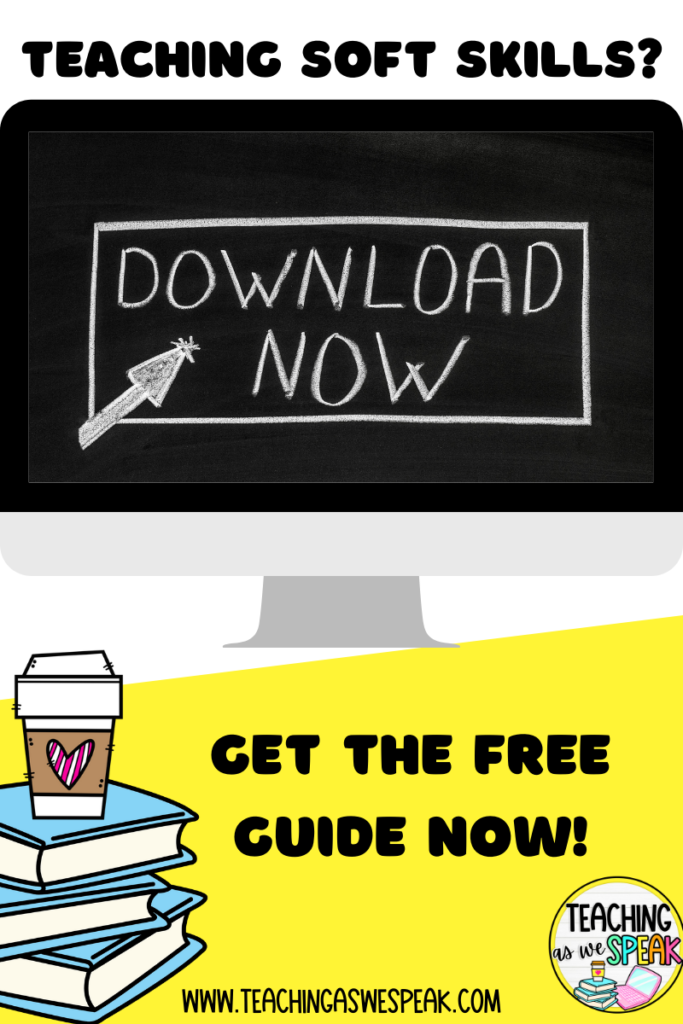Is empathy a soft skill? Empathy is one of the most important skills we can have as people. When talking about empathy, however, there seems to be a lot of mystery and confusion surrounding it. Is it a soft skill? What does it mean? If empathy is so important, why don’t we know and understand it more?
You know that feeling when you sit down to tell someone something important, and you can see them lose focus; their eyes glaze over, their mind wanders to someplace else and they give nothing in terms of commentary or feedback back to you.
You know exactly what I’m talking about, don’t you? This, my friend, is a perfect example of what not to do if trying to show empathy.
Let’s dive into this important people skill…

Are you a teacher who wants to know more about teaching empathy and other soft skills? Click here to download the free soft skills guide!
Empathy is a soft skill-and an important one at that!
Many soft skills are important to have. Skills such as communication, time management and, yes, empathy. Empathy is a soft skill that, more often than not, tops the list of the most important soft skills that an employee can have.
According to Business Solver, 84% of CEOs believe empathy drives better business outcomes, however, only ¼ employees believe empathy in their organization is sufficient.
The stats are clear, empathy is extremely important! But what if we didn’t just it as a soft skill that should be shown by mature adults in the workforce but that should be fostered in young children?

Here are just a few more examples of how important empathy and soft skills are to us as people:
- According to research conducted by Harvard University, the Carnegie Foundation and Stanford Research Center, 85% of job success comes from having well‐developed soft skills, but only 27.6% of money spent on professional development by US employers went to soft skills training
- The Adecco Group found that 74 % of employees want their managers to demonstrate a leadership style focused on empathy and a supportive attitude.
So what exactly is empathy and what does it look like? We will explore these questions in the next sections…
Want to know more about empathy and other soft skills worth having/teaching? Download the free soft skills guide now by clicking here!
Still unsure about what soft skills are and why they are important? Read my recent blog post about soft skills by clicking here!
What exactly is empathy?
Now that we know that empathy is an important soft skill, it’s time to break down what this soft skill is and how it shows up in human interactions.
First of all, how would you define empathy? Comment down below!

Dictionary definitions for empathy vary. However, the key components of empathy include being able to:
- Understand others’ feelings
- Share the feelings of another
- Comparing other peoples’ experiences with your own
- See yourself in the position of someone else
If you have empathy, it means you are not only able to listen to someone but listen to them and truly understand the feelings that are trying to convey to you. In these moments, you are not trying to change their mood by making them feel better. Instead, you are sitting in this feeling with them.
Click here to download the free guide to teaching soft skills in the classroom!
Did you know there are different types of empathy? There are 3 types of empathy. However, they are best understood as levels of empathy.
- Cognitive Empathy- When you see someone else’s view
- Emotional Empathy-When you feel what someone else is feeling
- Compassionate Empathy- When you take action by providing words of affirmation or simply listen to them
Is Empathy a Soft Skill that Can Be Taught?
The short answer is yes!
A question I’m often asking myself is “if we know that empathy is so important in adults, why aren’t we teaching it more to children?”.
Think of empathy as a muscle; it needs to be exercised for it to grow.
So how can we grow empathy in ourselves and young children?

Here are some examples of ways to teach your children or students empathy:
- Read fictional stories. Studies show that reading fiction will increase your exposure to the perspectives of others, and therefore improve your ability to understand others
- Encourage children to find things in common with people around them
- Practice active listening
- Talk about feelings and acknowledge how you are feeling
- Practice mindfulness
- Validate your child’s feelings
Is Empathy a Soft Skill that Should be Taught?
Studies have shown that children as young as 3 years old can start to understand that other people have thoughts, feelings, likes, and dislikes that are different than their own. This shows that empathy can most definitely be incorporated in early elementary education.
By strengthening your empathy skills, you are improving other skills as well. These skills include:
- Negotiation
- Collaboration
- Creativity
- Making others feel safe
- Emotional Connection
Empathetic People share Similar Traits and Habits
Greater Good Magazine has pinpointed 6 habits of highly empathetic people, which include:
- cultivating curiosity about others
- Challenging prejudices and instead focusing on commonalities
- Using the motto “ walk a mile in someone else’s shoes”, meaning they experience life through multiple lenses
- Demonstrating active listening-and will open up as well
- Inspiring social change in others
Final Thoughts
My hope in writing this blog post is to help you, the reader better understands what empathy is and see the value in teaching empathy to your students.
Have questions or feedback? Please comment down below! I’d love to chat!
Don’t forget to grab your free download of the soft skill guide! Click here to download it now!





